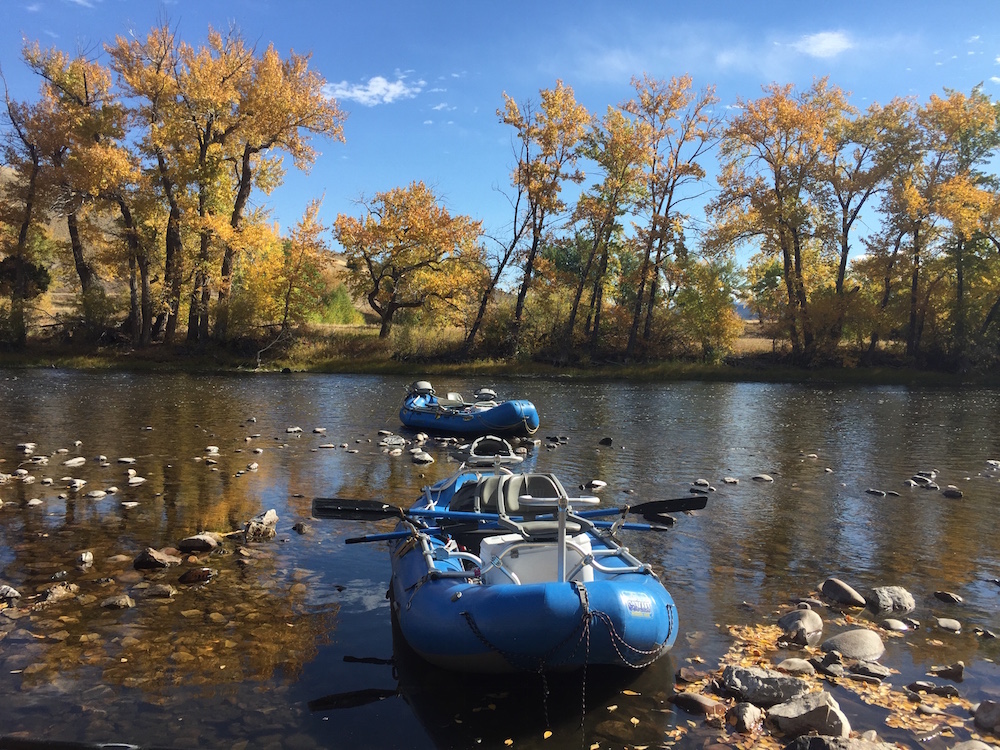Guest post written by Postfly ambassador and fly fishing guide Stephanie Winter (@stephanierwinter) of Big Hole Lodge in Montana (@bigholelodge).
You’re standing on the bank in front of a hole you’ve never fished before, now what?
Have you ever stood on the bank of a new spot thinking, “I have no clue how to fish this?” Here are six ways to get past the new spot slump and put your fly into a munching mandible.
Do Your Homework
If you live in a place where you can just drive down the road and accidentally happen upon an amazing fishing hole, then give it a shot. But, for the rest of us urban and suburban dwellers who must travel to fish, Googling is often an integral part of the fishing experience.
Before you hop in the car to set off to an amazing-looking lake with plenty of room to backcast, do a quick internet search to make sure there are actually fish in it and, if so, what type of fish swim there. Search for a hatch chart for the river or lake you’re trying out so you know which flies to bring or, better yet, stop by a local fly shop and ask the crew what to use. Doing a bit of research before you hit your new spot will help reduce the blank stare phase and get you fishing faster.

Time Your Trip
If you’re fishing the surf or any intertidal zone, knowing when the tides come in and out is very important. You don’t want to get to your fishing spot and find the beach you used to get there is gone now that its high tide.
Aside from getting stranded, fishing at different points in the tide will produce varied success rates. Try to avoid slack tides and instead target incoming tides where fish food will be more prevalent inland.
Certain areas during low tide will reveal holding spots for fish and make sight fishing much easier. Conversely, fish like salmon are just passing through and will often wait for high tide to make a move because the increased water volume makes their trip easier.
If there’s a hatch coming off around 9 or 10 am, you don’t want to show up at noon and miss it. Make sure you show up at the prime time to give yourself the best opportunity to catch fish.

Check Out The Scene
Look around for bug life. Are there insects hatching? Any bugs floating on the water? Any exuviae (exoskeleton remnants) on the rocks? Dig up some rocks and look underneath them. Are there any nymphs? When ocean fishing, are there birds circling? Are there minnows leaping out of the water?
Save yourself time and frustration by looking for signs of activity. Fish aren’t going to spend much time in areas that don’t have food, and neither should you. Don’t waste time fishing in a spot where there is no bug life or signs of fish.
Change Your Fly Pattern
You have your old standbys, but if you put one over a fish’s snout and they don’t give it a sideways glance, think about trying something else. Sometimes fly choice can come down to a particular size or color when the fish are picky.
Be prepared to use a lot of different flies before the local population starts paying attention. If you’re clueless about what to use, put your knot tying to the test and double your odds by tying on two flies.
Bring A Buddy
If possible, bring a friend who’s fished the area before. They’ll be able to help you with logistics you might not consider where to park or where the fastest path to the hole is. Even if they aren’t experts, they’ll at least know what didn’t work last time.
Even if you can’t find someone who’s been to your new fishing spot before, two heads are better than one. Going with another person will allow twice as many casts and twice as many presentations compared to going alone. If one of you gets no action and the other is getting bites left and right you can change up your pattern and location to match the more successful partner.

Don’t Be Discouraged By Getting Skunked!
It can be discouraging to feel like you’ve been outsmarted by a pea-sized aquatic brain, but don’t give up! You may have to accept defeat your first time in a new spot, but with time you will come to understand the feeding patterns of the fish in the area. It’s important to know which fishing holes are trickier than others.
A high traffic area with smart fish is more difficult than a high mountain lake visited by ten fishermen a year. Part of the fun of fly fishing is the mental challenge of dealing with failure.
Take a moment to relish in the fact that you’ve chosen a sport where one day will leave you feeling like Joan Wulff and the next feeling like a graphite-waving buffoon. Turn those frustrating zero-fish days into learning experiences, and take the opportunity to discover a little more about the sport.
Tired of missing out on fishing a new spot because you’re out of flies? Make sure your flybox is always stocked with a Postfly subscription.
https://postflybox.com/blog/2018/10/18/invest-in-what-you-love-equity-crowdfunding-and-why-were-doing-it/
https://postflybox.com/blog/2018/11/06/river-etiquette-fish-karma-why-they-are-so-important/
https://postflybox.com/blog/2018/11/13/game-fish-of-the-week-brown-trout/






2 thoughts on “How To Fish A New Hole Like A Guide”